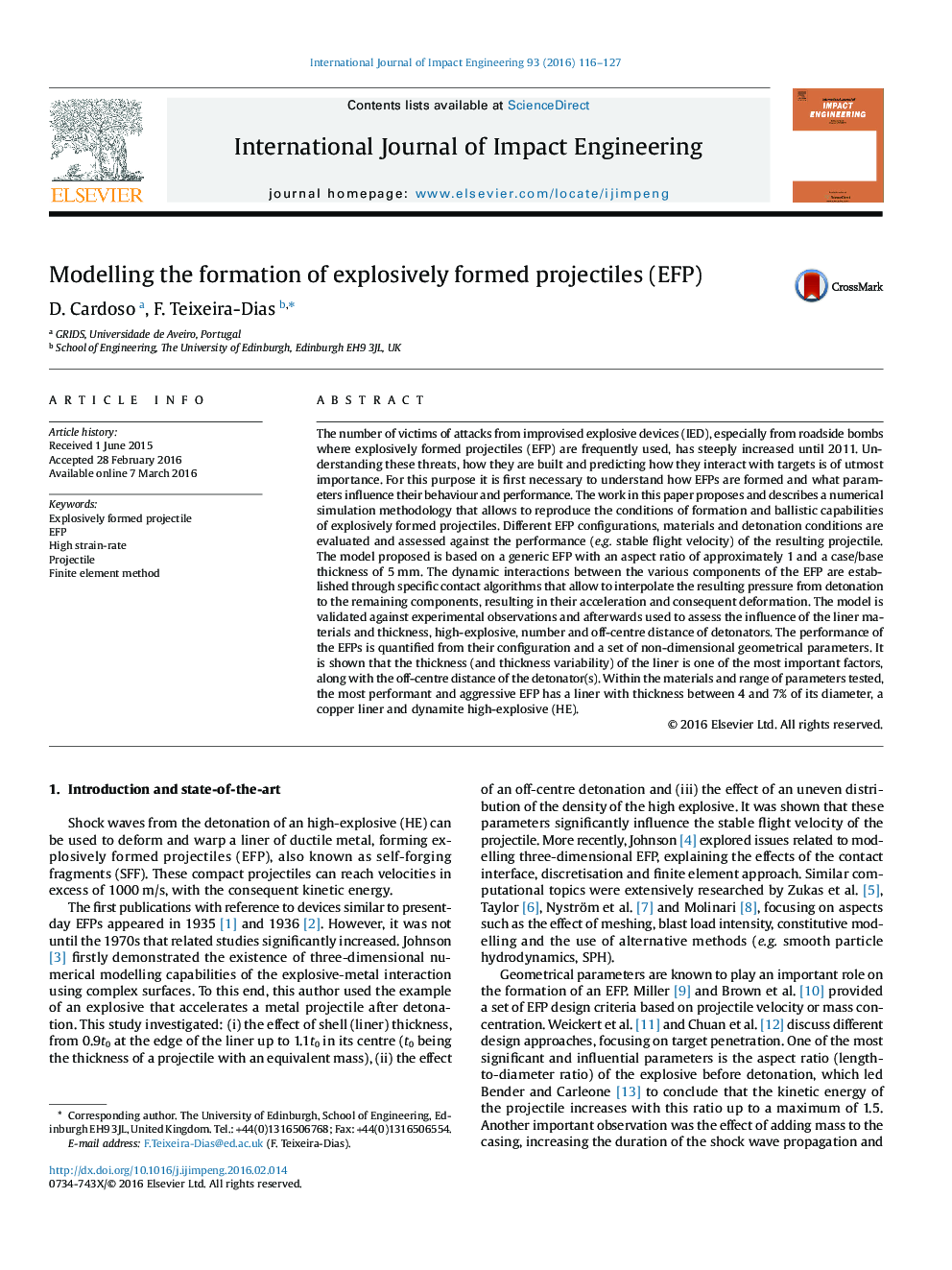| Article ID | Journal | Published Year | Pages | File Type |
|---|---|---|---|---|
| 782744 | International Journal of Impact Engineering | 2016 | 12 Pages |
•Authors model the formation process of explosively formed projectiles.•Study influence of materials (liner, HE) and detonation parameters.•Stable flight velocity is strongly influenced by liner thickness variability.•Kinetic energy of resulting projectile highly dependent on detonation parameters.
The number of victims of attacks from improvised explosive devices (IED), especially from roadside bombs where explosively formed projectiles (EFP) are frequently used, has steeply increased until 2011. Understanding these threats, how they are built and predicting how they interact with targets is of utmost importance. For this purpose it is first necessary to understand how EFPs are formed and what parameters influence their behaviour and performance. The work in this paper proposes and describes a numerical simulation methodology that allows to reproduce the conditions of formation and ballistic capabilities of explosively formed projectiles. Different EFP configurations, materials and detonation conditions are evaluated and assessed against the performance (e.g. stable flight velocity) of the resulting projectile. The model proposed is based on a generic EFP with an aspect ratio of approximately 1 and a case/base thickness of 5 mm. The dynamic interactions between the various components of the EFP are established through specific contact algorithms that allow to interpolate the resulting pressure from detonation to the remaining components, resulting in their acceleration and consequent deformation. The model is validated against experimental observations and afterwards used to assess the influence of the liner materials and thickness, high-explosive, number and off-centre distance of detonators. The performance of the EFPs is quantified from their configuration and a set of non-dimensional geometrical parameters. It is shown that the thickness (and thickness variability) of the liner is one of the most important factors, along with the off-centre distance of the detonator(s). Within the materials and range of parameters tested, the most performant and aggressive EFP has a liner with thickness between 4 and 7% of its diameter, a copper liner and dynamite high-explosive (HE).
